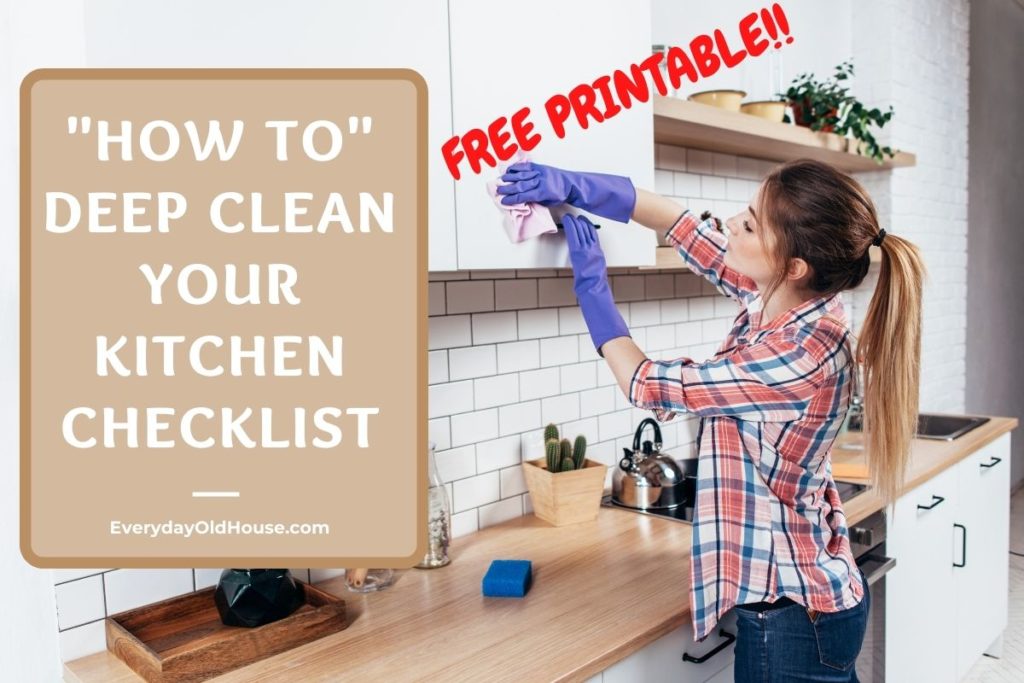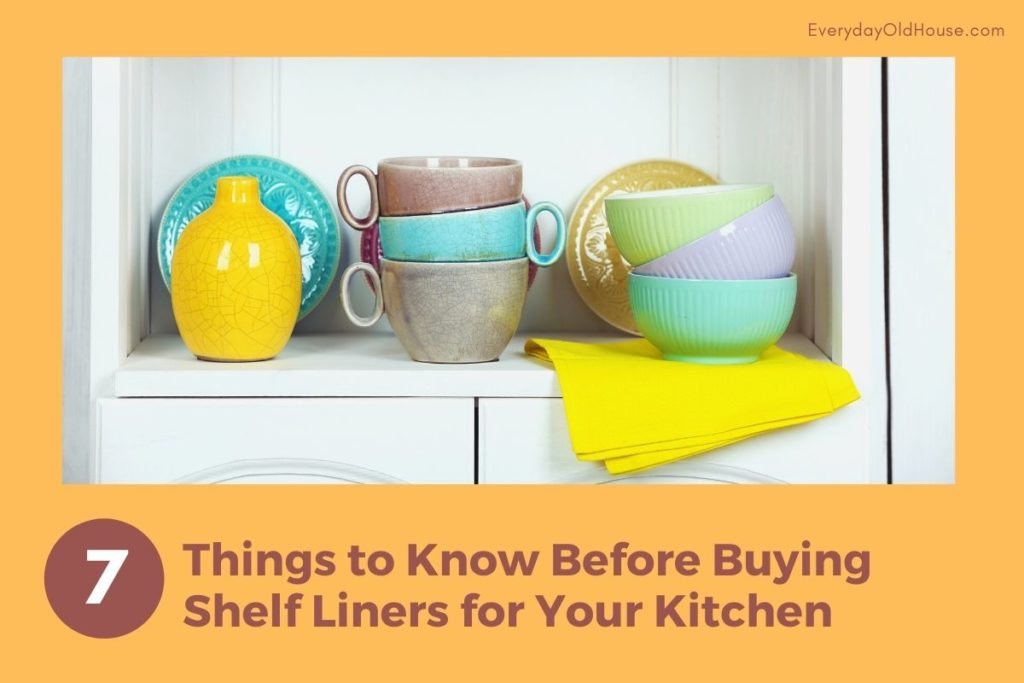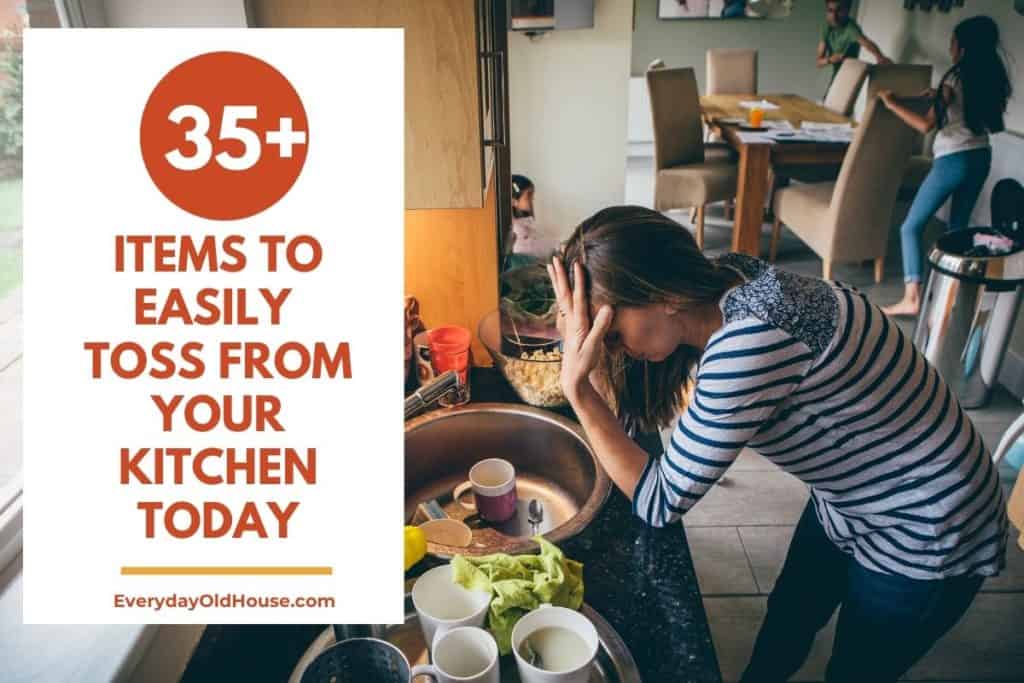Last Updated on February 2, 2025
Your mom may have done it. Your grandmother probably did it. Now it’s your turn to decide. Do you really need kitchen cabinet shelves and drawers? Are kitchen cabinet shelf liners REALLY necessary? Some homeowners swear by them, while others think they’re just a waste of money and just another thing to clean. My opinion on the pros and cons of shelf liners and whether or not they are worth the investment? It all depends…..
Personally, I think the task of lining kitchen cabinet shelves is about as fun as watching grass grow. Right up there with washing windows. I’ve lined shelves and drawers before. It’s a time-sucking experience that tries my patience. But, like most kitchens, our cabinets are heavily used and abused. (Sorry kitchen. Love you! ❤️) So now I’m in the predicament of whether or not kitchen cabinet shelf liners are necessary….
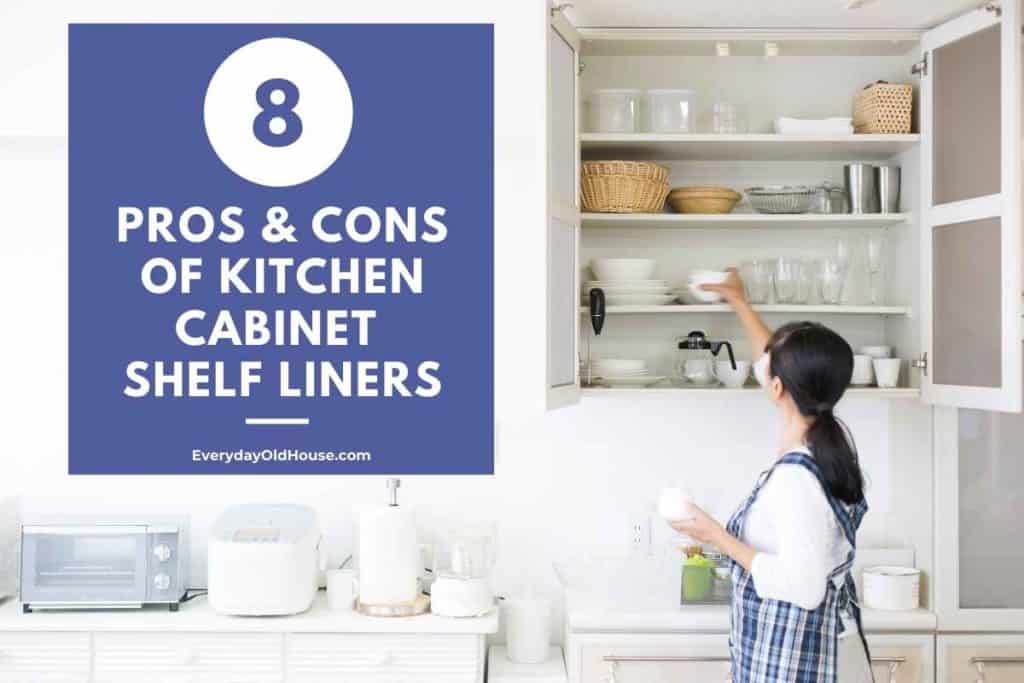
This post contains affiliate links, including but not limited to, Amazon Associates. As such, I earn from qualifying purchases. Full disclosure located here.
What Are Shelf Liners and Why Do People Use Them?
Shelf liners are thin materials placed inside kitchen cabinets, drawers, or pantry shelves to protect the surface underneath. They come in different materials like vinyl, fabric, plastic, and adhesive contact paper. People use them for several reasons, including:
- Offering an easy-to-replace barrier for messy areas.
- Preventing water damage, especially under the kitchen sink.
- Keeping small items from rolling around in cabinets and drawers.
- Making cleaning easier by providing a wipeable surface.
- Adding a decorative touch to kitchen shelves.
Pros of Using Kitchen Cabinet Shelf Liners
1. Protection Against Water Damage
Ok, ok, I’ll admit it. I’m totally guilty of emptying the dishwasher and putting away not-completely-dry dishes. I know it’s wrong, I’m just slightly impatient. I force my kitchen to keep up with our busy lifestyle. Kitchen cabinet liners protect cabinets against water damage and water rings from those not-so-dry dishes.
Maybe you’re a better person that me and wait until all the dishes are dry. But kitchen cabinet shelf liners might still be necessary if you store cleaning supplies or liquids under the kitchen sink. Leaks from the kitchen sink or garbage disposal can occur so a waterproof liner can prevent moisture from damaging the wood. Over time, water exposure can cause swelling and warping. A shelf liner lowers the risk of dealing with wet wood.
2. Easy Cleaning
While this depends on the brand and type, most shelf liners provide a wipeable surface that makes cleaning up spills and crumbs quick and effortless. Instead of scrubbing down wooden shelves, you can simply remove the liner or wipe it clean in seconds.
Kitchen cabinet liners protect cabinets against water stains and rings from those not-so-dry dishes.
Related Post: Comprehensive Kitchen Deep Cleaning Checklist [PRINTABLE]
3. Prevents Scratches & Wear
Certain types of cookware – pots, pans, small appliances – are especially harsh on kitchen cabinets. Pulling those pots in and out of kitchen cabinets usually results in scrapes and dings in wood cabinets.
Here’s a photo of where I store my pots and pans. Lots of dings, scratches (and admittedly, some dirt!)
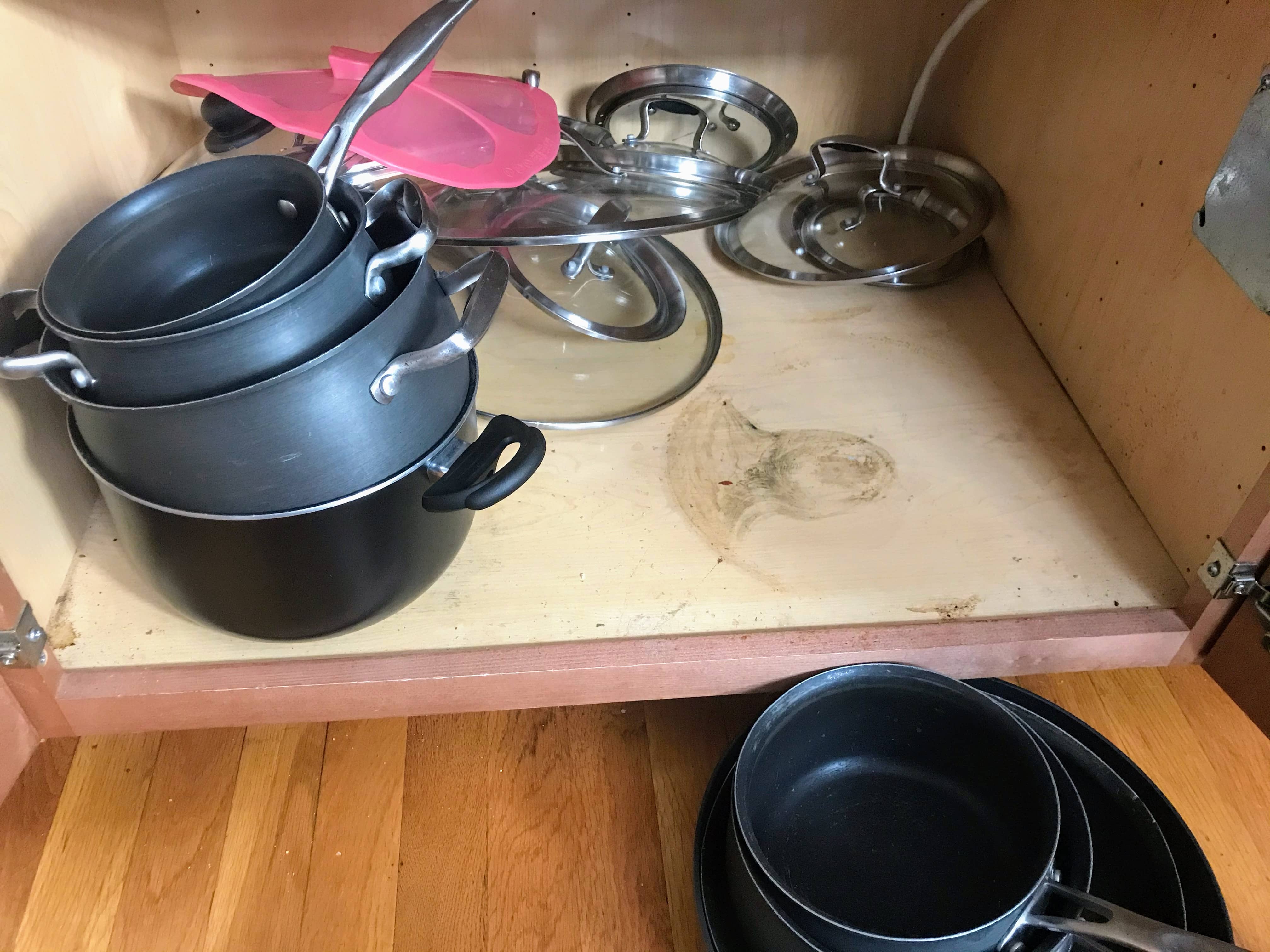
Shelf liners are a simple solution as a protective barrier, keeping surfaces looking new for longer and reducing the chances of wear and tear.
4. Pest & Mold Prevention
Did you know that there are certain liners on the market, especially antimicrobial ones, can help deter insects and prevent mold from forming? Yeah, that’s new to me too. This is particularly beneficial in humid environments where moisture buildup can be a concern.
5. Noise Reduction
If you own kitchen cabinets with soft-close hinges, well, #1, I’m jealous. And #2, installing slightly-padded liners can help keep the noise low. It will muffle the noises of banging pots and scraping dishware on bare cabinet shelves. Felt or cushioned liners help soften the noise of dishes clanking against cabinet surfaces. This small change can make a noticeable difference in households where noise reduction is a priority.
5. Aesthetic Appeal
Patterned liners or contact paper can give kitchen shelves a fresh, updated look without the commitment of paint or staining. Adding fun, colorful liners is a subtle and discreet way to introduce pattern and color into the kitchen. It’s a fairly easy and cheap way to incorporate personality into your home.
6. Organizational Benefits
A professional organizer might recommend shelf liners as a way to create a tidy, structured storage space. Liners can help define areas within cabinets, making it easier to keep things in their designated spots. Certain types of drawer lines are “grippy” and keep small items from rolling around in cabinets and drawers.
And if you happen to have wire shelves (especially popular in pantries), a kitchen shelf liner can add functionality. A heavy-duty, clear liner like this one makes wire shelving even more usable by preventing small items from falling between the wires. They even have notched corners to help keep them in place on your shelves!
Cons of Using Kitchen Cabinet Shelf Liners
1. Trap Moisture
If not breathable, some liners may hold in moisture, leading to mold or mildew. This can be especially problematic if spills occur and are not cleaned up promptly. If moisture gets trapped beneath the liner, it can seep into the wood, potentially causing long-term damage rather than preventing it. To avoid this issue, it’s best to choose a liner with ventilation or ensure spills are wiped up quickly.
2. Adhesive Residue
Sticky liners like contact paper can be difficult to remove, leaving behind a messy residue. If you frequently update your kitchen decor, dealing with this can be a frustrating and time-consuming process.
When I think the adhesive shelf liners, I think of my grandmother’s super-sticky contact paper. I remember watching her try multiple times to carefully install contact paper without making creases and fighting air bubbles. And failing (and cursing under the breath). Don’t get me wrong. Contact paper is fantastic since it is water-resistant and durable. And it works amazing for a few years.
But then the edges come up. Or the color fades. Or the pattern just gets tired and outdated And then you want to remove it.
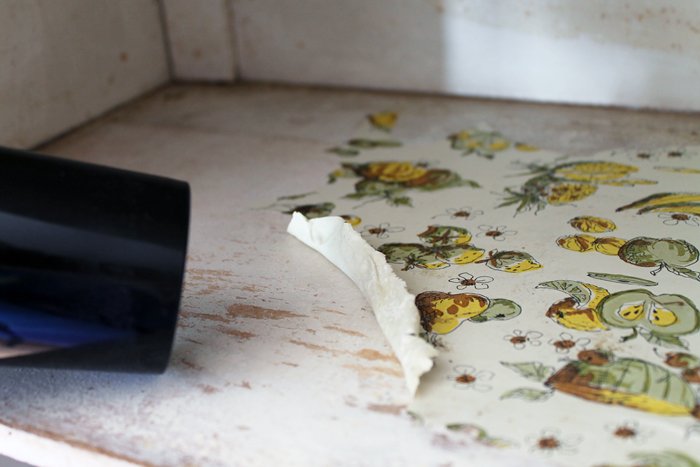
It is impossible to remove!!!! Good luck, my friend!
3. May Slide or Curl
Depending on the quality, non-adhesive liners sometimes aren’t that much better. These drawer liners can shift over time, requiring frequent readjustment. If not properly secured, they can bunch up or curl at the edges, making them less effective at protecting surfaces. Scrolling through Amazon, I couldn’t find a liner with raving reviews on its ability to stay in one place. Admittedly complaints were commonly related to the shelves that held larger items, like pots and pans, small appliances, etc.
4. Collects Dirt & Crumbs
Some textured liners can actually trap debris, making them harder to clean than bare shelves. Instead of keeping cabinets cleaner, they may end up holding onto dust and food particles. Yeah, no thanks. Not a good idea. I already have enough to clean!!
5. Limited Lifespan
Cheap liners may tear, curl, or need frequent replacement. While they offer short-term benefits, they may not be the most durable solution for long-term use. Over time, repeated cleaning and exposure to heat and moisture can cause liners to degrade, leading to peeling edges and frayed corners. In high-traffic areas like cabinets used daily, liners can wear out quickly, requiring constant maintenance or replacement. Investing in higher-quality liners can extend their lifespan, but even the best ones will eventually need replacing.
6. Color Change
One of the advantages of liners listed above (that they add color) – can also be a disadvantage. Imagine lining all your kitchen cabinet shelves and drawers in a beautiful bold pattern, like the beautiful multi-colored butterfly contact paper shown above.
And then a year later you encounter a hot new shade of paint color that you just MUST have in your kitchen. Or maybe a new dish set that you have fallen in love with.
But it completely clashes with the chic shelf paper.
Ugh…
7. Not Always Necessary
If your kitchen cabinet shelves are already well-sealed and maintained, shelf liners might not be needed. For example, high-quality sealed wood or laminate shelves are already designed to resist stains and moisture, making additional liners redundant. In some cases, using shelf liners could add an unnecessary extra step to cleaning without offering much benefit.
Do Shelf Liners Extend the Life of Kitchen Cabinets?
Ok, side note. You’ll notice up in the Pros section that I didn’t mention that shelf liners extend the life of kitchen cabinets. Before writing this article, I thought they did. But I’m wrong (alert the press!!! Jen admitted she’s wrong 😂)
Kitchen cabinet installers report that while shelf liners can keep shelves cleaner and more sanitary, they aren’t the main driver for homeowners to replace their kitchen cabinets.
When Shelf Liners Are (and Aren’t) Necessary
So, should you use shelf liners? Here’s a quick guide:
✅ You NEED them if:
- Your cabinets are prone to water damage (especially under the kitchen sink).
- You have wire shelves that need a flat surface.
- You want an easy-to-clean barrier for small items and food storage.
❌ You DON’T need them if:
- Your kitchen cabinet shelves are already well-sealed and maintained.
- You prefer the natural look of open shelving.
- You don’t mind cleaning and maintaining wooden surfaces directly.
Final Thoughts: Are Kitchen Cabinet Shelf Liners Necessary?
At the end of the day, kitchen shelf liners aren’t essential for every kitchen, but they can be helpful in certain situations. If you need extra protection, easy cleaning, or a fresh look, they might be worth the investment. However, if your cabinets are already durable and well-maintained, you may not need them at all.
Did I Line My Kitchen Cabinets?
Ultimately, yes. And no. Let me explain….
I decided against lining ALL of my kitchen drawers and shelves. It wasn’t worth all the time and effort. I wanted a simple solution.
Instead, I bought drawer liners for just two kitchen shelves. The ones that take the brunt of markings and risk potential water damage. 1. The shelf with the pots and pans (pictured at the beginning of this post), and 2. the shelf under the kitchen sink.
It took research (i.e. 7 Things to Consider When Buying Drawer Liners) but eventually I found two top-notch under sink liners.
Related Products
Related Posts
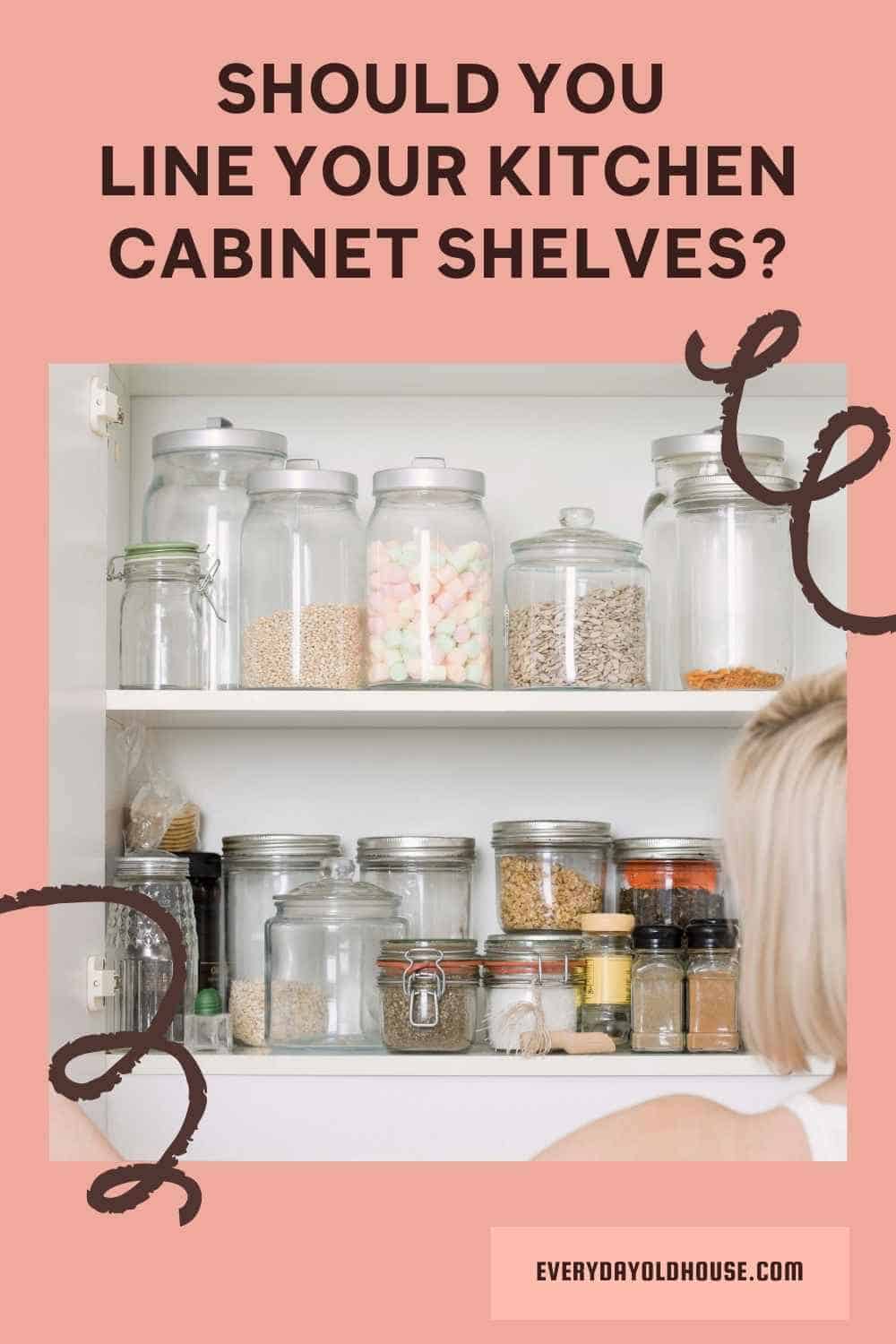
Want to be the first to know about new posts? Be sure to follow me on Pinterest, Facebook, Instagram or Twitter of even Etsy! Or better yet… Subscribe below!
My monthly (admittedly sometimes more, sometimes less….) emails are like receiving a unexpected letter from an old friend WITHOUT needing to put on your slippers and walk out to your mailbox…. See? I got ya, my friend!)
[Note: My posts are proudly connected to these amazing link parties full of DIY ideas and inspiration!]
